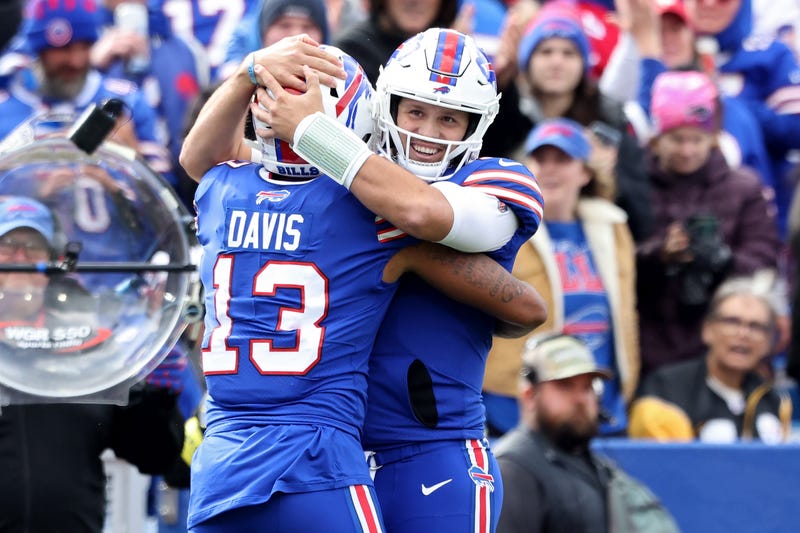
Buffalo, N.Y. (WBEN) - Despite the disappointment of Monday night's season-opening loss to the New York Jets in New Jersey, plenty of Western New Yorkers are amped up for another exciting season of Buffalo Bills football.
The Bills are set to open their home portion of the regular season schedule on Sunday when they host the Las Vegas Raiders at Highmark Stadium in Orchard Park. However, if you are not heading to the stadium for the game, you may be left in the dark if you happen to try watching the game on DIRECTV.
That's because the digital satellite provider remains in an ongoing dispute with Nexstar, the parent company of the CBS affiliate in Buffalo, WIVB-TV.
DIRECTV and Nexstar have been in a dispute since early July, with Channel 4 being unavailable for viewers over the course of several weeks. Football fans were unable to view the NFL's opening week of action on CBS as a result of the dispute.
John Di Sciullo from WBBZ-TV in Buffalo says this dispute is another unfortunate circumstance where the viewer is ultimately the individual held hostage in these negotiations.
"You've got two very large companies: Nexstar that owns hundreds of television stations and DIRECTV that, obviously, is a carriage partner across the country. And they're looking, for what's, called retransmission, so that money exchanged from DIRECTV to the local broadcaster, or in this case Nexstar and then filtered down to the local broadcaster, to compensate them for the product they deliver when it comes to sports news," explained Di Sciullo in an interview with WBEN. "They're at an impasse, so who's the loser? The viewer."
Di Sciullo is hopeful DIRECTV and Nexstar are able to resolve the dispute for football fans before Sunday's home opener. However, he is not sure how much longer a dispute like this will continue.
It was just this past Monday when Charter Communications, parent company of Spectrum cable, resolve a long dispute with Disney, allowing for viewers to be able to access ESPN the day of the Bills' season opener on "Monday Night Football".
"It could come down to the 11th hour, or it may linger on. I've seen these things linger on, and, of course, the viewer in the end is the one that gets frustrated the most," Di Sciullo said.
Di Sciullo has noticed over the years more disputes such as this taking away from the viewing experience of many people who pay for these services, no matter the carrier service. These major companies continue to find themselves at an impasse.
"You have to look at it from both sides: The carriage partner is able to charge a fee and then they deliver a clear product, and the broadcast partner pays a lot of money for, whether it's the network or the station themselves, to deliver a newscast and deliver sports items. So both parties want to be equally compensated, and at the end of the day, the person that really picks up the cost for any of these negotiations is, again, the end user, the customer," Di Sciullo explained. "If there's an increase in fees, it's passed down to the customer. It could be in terms of pennies or dollars, but it all adds up."
This has become a huge reason why more-and-more people have elected to "cut the cord" and choose alternative methods of viewing the content they want. Di Sciullo has noticed the changes in how many people have decided to eliminate their subscriptions to services like DIRECTV, Spectrum or Fios - to name a few - over the years.
"I'm a longtime broadcaster in Buffalo, and at one point, it was as high as 65%, maybe even 70% of the market was cable driven. Now I've heard that number to be maybe as low as 48%-50%," Di Sciullo said.
If Bills fans are unable to watch the game in a social gathering, such as going to a sports bar or to someone's house, Di Sciullo says there are other ways to watch the game from your home, knowing how important football is to many Western New Yorkers.
"We see the WBBZ people say, 'Well, I want to watch you over there. How do I do that?' With a VHF antenna high up on your home, you can get us. Same thing with WIVB, if you have an antenna, you can get them over-the-air," he said. "And streaming has replaced cable, at this point from what I understand, as the most watched platform for people to watch video and content. Whether it's a movie or sports game, I'm 61, but my daughter, who's 23, she finds a way to watch games on a streaming service. It will ultimately drive people to other methods of watching whatever they want to watch."
More from Di Sciullo is available in the player below:
